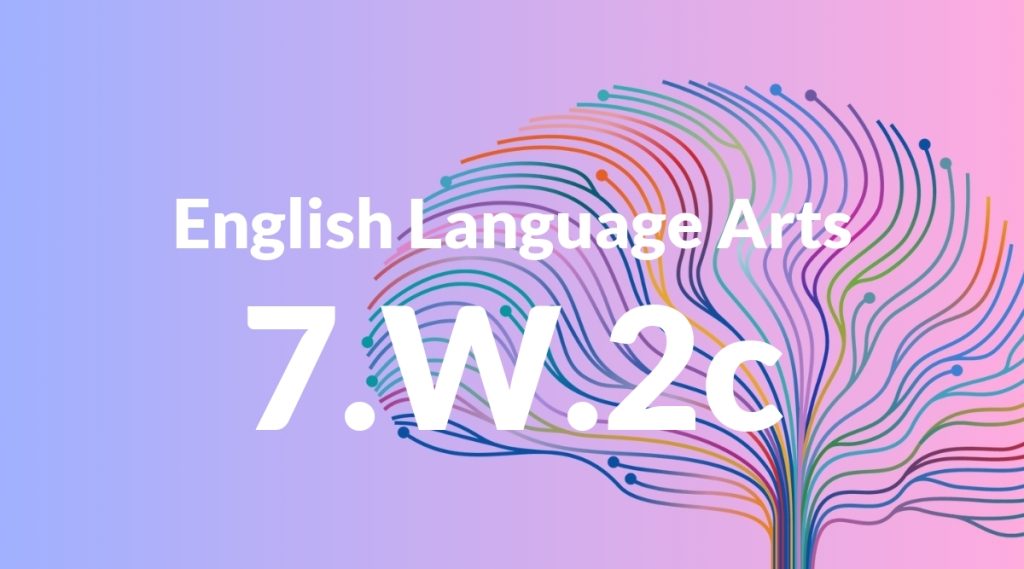Standard: 7.W.2c – Use appropriate transitions to create cohesion and clarify the relationships among ideas and concepts.
Grade level: Grade 7
Subject: English Language Arts
Domain: Writing
Teacher Overview
This standard focuses on the use of appropriate transitions to create cohesion and clarify relationships among ideas and concepts. Mastering this skill is crucial for students to write clearly and effectively, allowing their ideas to flow logically and be easily understood by readers. Students should have a solid understanding of basic sentence and paragraph structures and be familiar with simple transition words.
After mastering this standard, students will be able to write more complex and nuanced texts, and will be better prepared to analyze and evaluate the use of transitions in other writings.
Common Misconception 1
A common misconception is that any transition word can be used in any context. This is incorrect because different transitions serve different purposes and can change the meaning of a sentence if used incorrectly.
Intervention 1
Use targeted exercises that focus on matching transition words to their appropriate contexts, and provide examples and non-examples to illustrate correct usage.
Common Misconception 2
Another misconception is that transitions are only necessary between paragraphs. This is incorrect because transitions within paragraphs are also important for maintaining the flow and coherence of ideas.
Intervention 2
Incorporate activities that require students to practice using transitions within paragraphs, such as combining sentences and creating cohesive paragraphs from jumbled sentences.
Prerequisite Knowledge
Students should understand basic sentence and paragraph structure, as well as the concept of a topic sentence and supporting details. They should also be familiar with simple transitions like ‘and’, ‘but’, and ‘then’.
Subsequent Knowledge
After mastering this standard, students will be able to write more complex and nuanced essays, narratives, and reports. They will also be better prepared to analyze and evaluate the use of transitions in other texts.
Instructional Activities
- Create a transition word bank and have students practice using them in sentences.
- Have students rewrite a paragraph without transitions and then add appropriate transitions.
- Conduct peer review sessions where students identify and suggest improvements for transitions in each other’s writing.
- Use graphic organizers to help students plan the use of transitions in their essays.
- Analyze excerpts from literature and identify the transitions used by authors.




